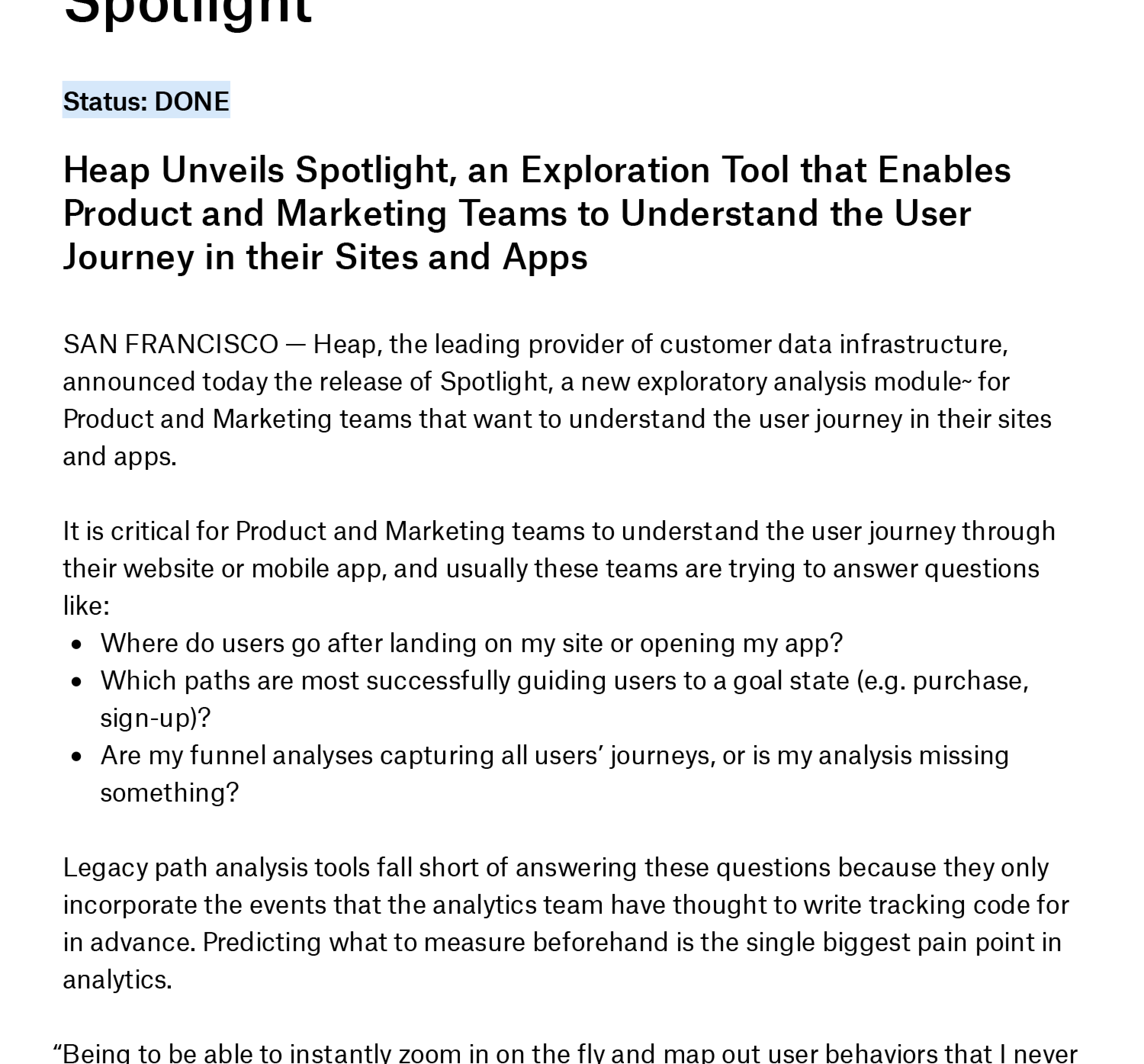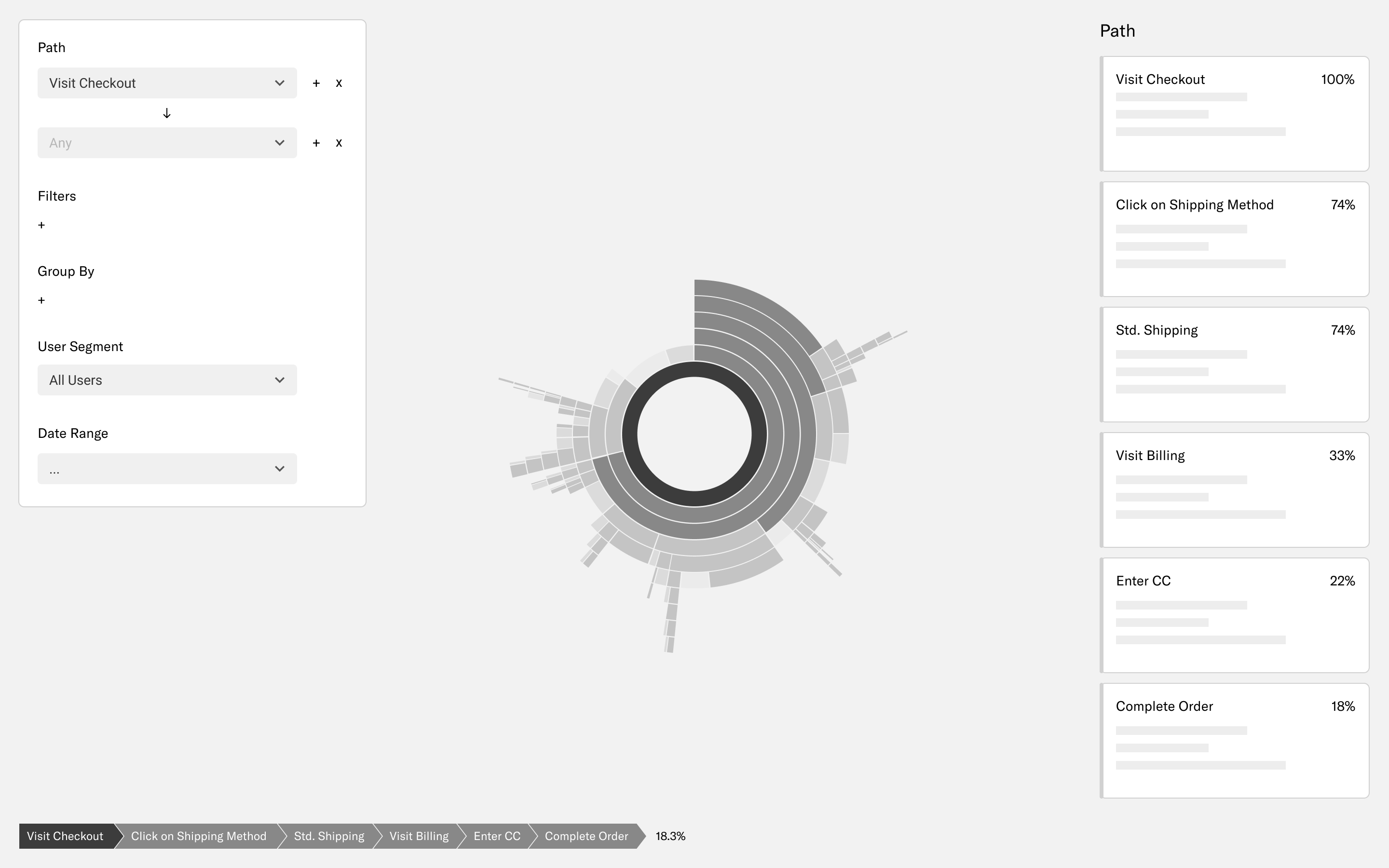
Heap: Concept Bikes
- ← Projects
- Date:2018 - 2019
- Role:VP Design, Interim VP Product
Background
Heap provides behavioral analytics for websites and mobile apps. I joined as VP Design and sole designer when it was a Series B company of less than 100 people, and built the design practice as the company grew from Series B to D. I also served as Interim VP Product for half of 2019, managing both the design and product teams simultaneously.
The Problem
Go-to-Market and Product leadership often disagreed about the right focus for product-development work. And, it was difficult to conduct a participatory, cross-functional quarterly planning process: often, big projects were amorphous at the outset, which leds to misunderstanding and confusion. How might we promote fully cross-functional, informed discussion of big bets without requiring extensive up-front product work that might ultimately never see the light of day?
The Solution
I created a process to achieve that discussion. In the early days of each quarterly-planning cycle, the leadership team would select a handful of potential projects and assign highly cross-functional squads to work on a "concept bike" for each one. These were further categorized as "Horizon" 1, 2, or 3 to indicate their level of risk and time horizon.
Each squad had 90 minutes to ideate, 90 minutes to produce a fictional press release and a set of sketches, and a little additional time to discuss and revise. We presented the concept bikes at the company Quarterly Business Review and used them as a basis for discussing the quarter's priorities.
Concept bikes are rooted in the same philosophy as design briefs: they're low-effort, low-fidelity processes and artifacts aimed at aiding collaboration and alignment with limited effort.
Here, you can see the press release and sketch for a project that ultimately became Heap's Paths feature.


Reflection
As intended, Concept Bikes yielded more productive, less contentious planning—and led to more predictable product launches without fully sacrificing agility. They also provided a venue for more collaboration across Product (EPD) and Go-to-Market teams, hopefully building empathy across roles.
We first used Concept Bikes in Q2 2019, repeated the process in Q3, and then dropped them as the company grew and matured. I don't see this as a flaw in the process, so much as a recognition that different times call for different frameworks.